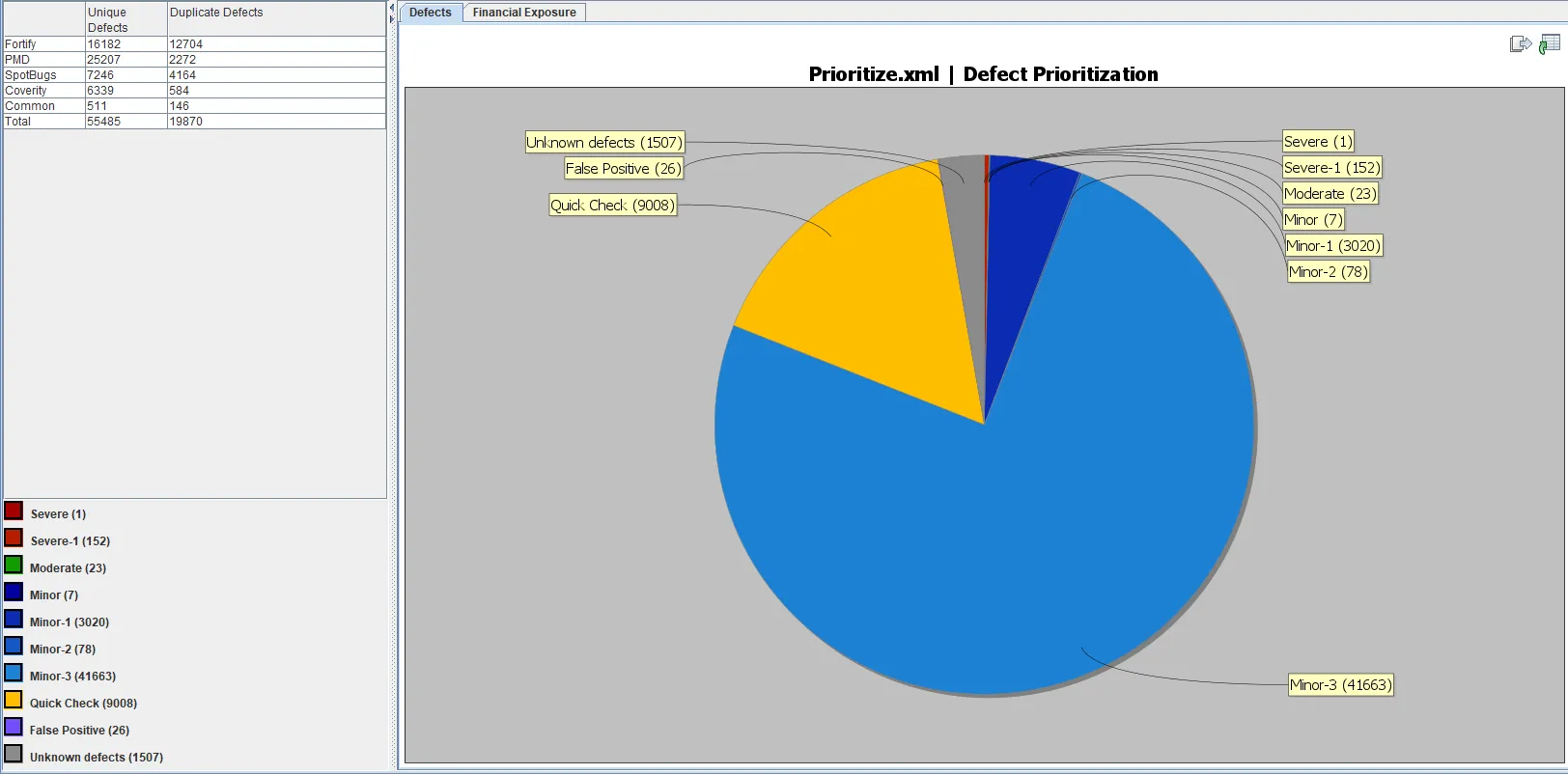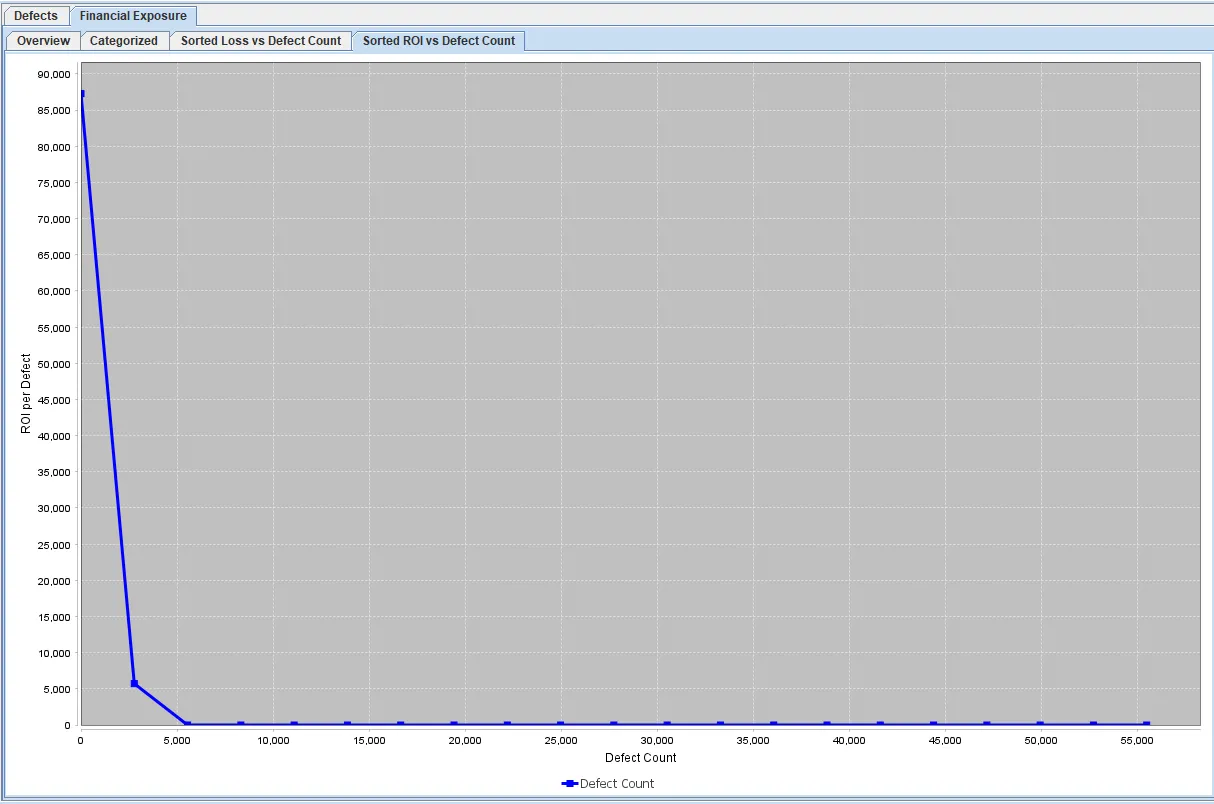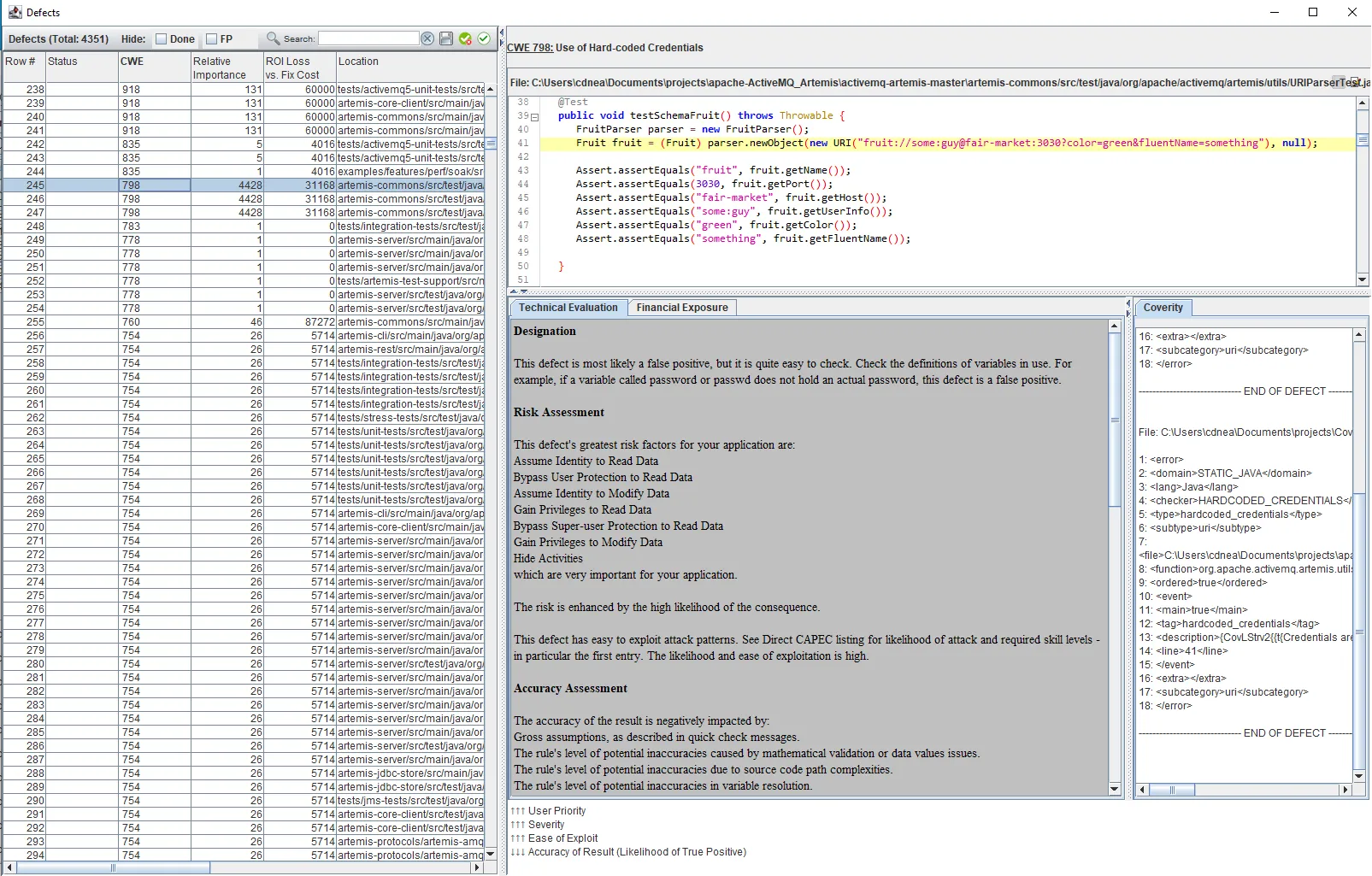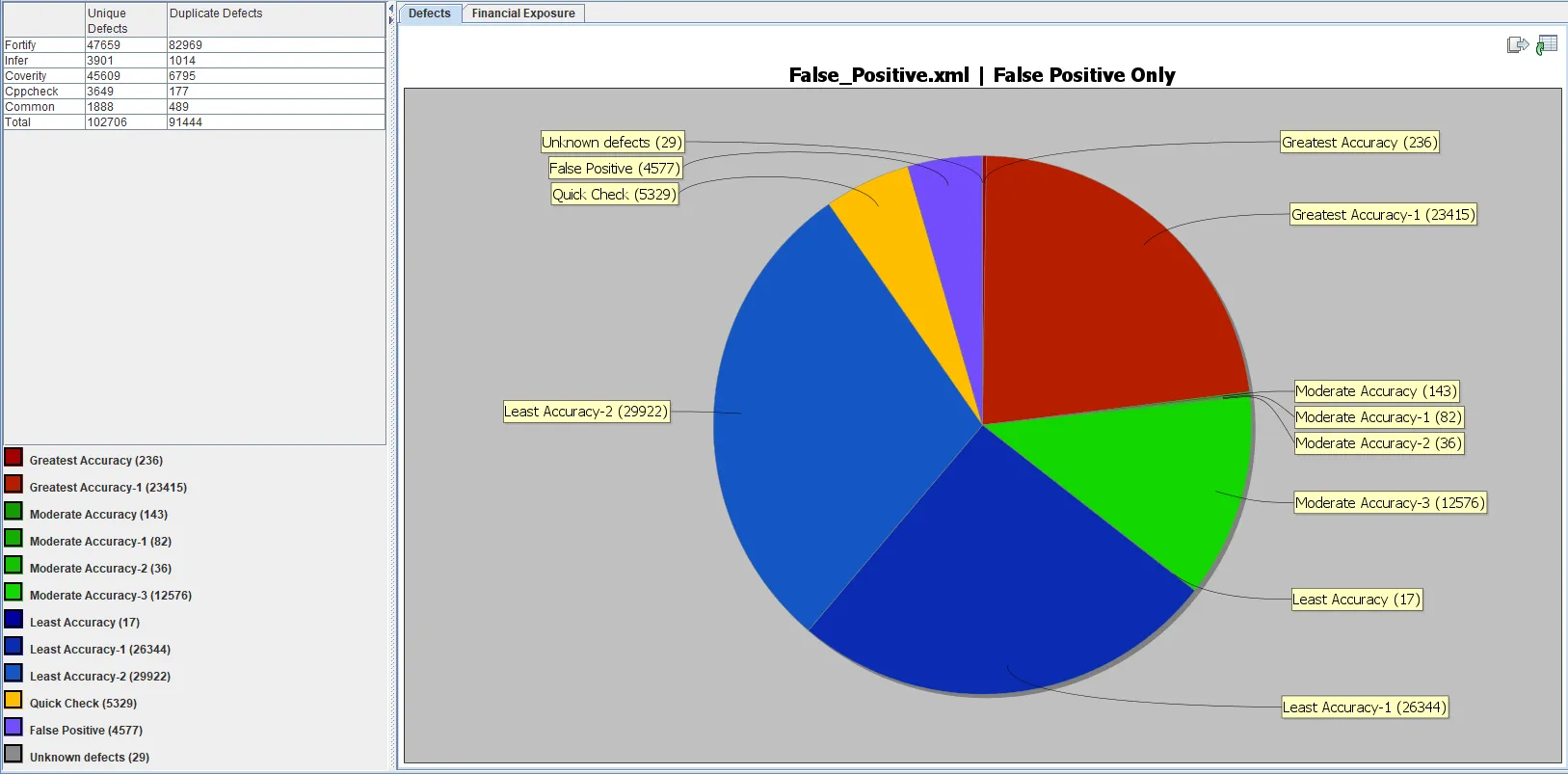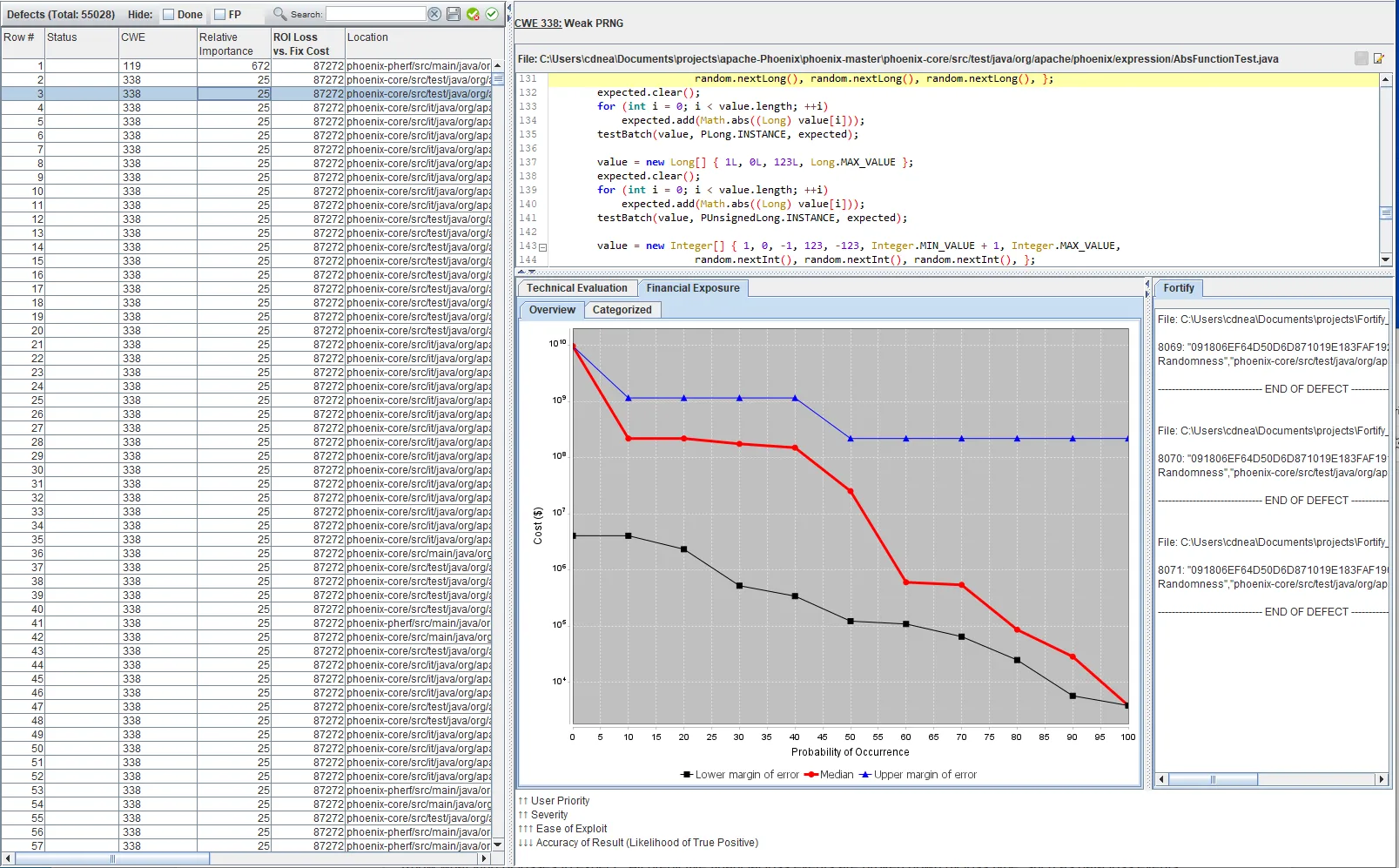Technology-Based Improvements
Gain >100x productivity improvements by changing cyber threat management from possibilities to probabilities.
Universally, application security tool (AST) users are overwhelmed by the laborintensive triage and resolution of 10s K defects. Tool users typically rely on AST and CVSS scoring to focus their efforts. However, this scoring is driven by possibilities: “is there a possibility that there is at least one case worldwide of a severe impact with this defect?” Using possibilities leads to 30% of defects being labeled critical or severe – a bucket of 10s K defects with no differentiation – just a fix all of these approach.
Using a statistical approach and context-based prioritization, SATriage presents a 1-to-N listing of defects, from the single most important defect to the least. SATriage’s typically finds that less than 1% of defects have the probability of being critical.
Do you know which defects are critical? 80% of defects that SATriage finds as critical are actually labeled as minor, by AST and CVSS scoring methods. That means that you are leaving the bulk of the truly critical defects in your application. Can you take that risk??
And don’t just take our word for it, SATriage is fully transparent – explaining why each defect is given its priority or risk rating.
ROI-Based Approach
Using an ROI-base method will reduce expected financial loss by orders of magnitude compared to current methods at no additional cost. A team can fix all positive ROI defects from all industry tools for less than cost to fix severe defects from one tool. This approach can offer 10000:1 ROI, including the costs of tools license and maintenance.
Development-Centric
Enable non-security personal with extensive developer-centric information for each defect:
- The relative likelihood of all attacks, both direct or through event chains, that can breach the defect
- All consequences of a defect and their likelihoods
- Expected financial loss and ROI for each defect
- Likely causes for each defect to be a false positive
- Why SATriage determined a defect’s ranking
False Positives - the Bane of Application Security
CyberSagacity’s longitudinal data shows that 5 – 20% of the defects found by ASTs have a high (> 95%) chance of being false positives. False positives result in wasted work for personnel. For such defects, SATriage presents quick checks that allows a developer to identify false positives in seconds – not hours. Imagine the productivity gains by dismissing large quantity of defects in days.
